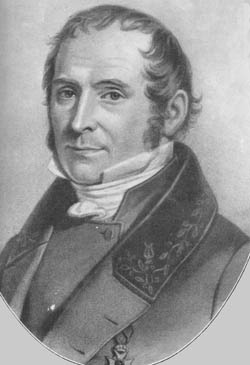
Elias Magnus Fries was a Swedish mycologist and botanist. He is sometimes called the "Linnaeus of Mycology". In his works he described and assigned botanical names to hundreds of fungus and lichen species, many of which remain authoritative today.
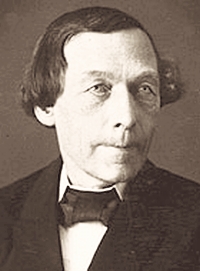
William (Wilhem) Nylander was a Finnish botanist and entomologist. Nylander was born in Oulu, and taught at the University of Helsinki before moving to Paris, France, where he lived until his death in 1899.
Charles Christian Plitt was a botanist and lichenologist. Species of lichens that have been named in Charles Plitt's honor are: Pyrenula plittii R.C.Harris, Xanthoparmelia plittii (Gyelnk) Hale, and Pertusaria plittiana Erichsen.
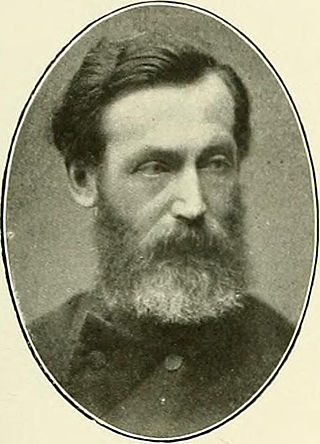
Ferdinand Christian Gustav Arnold was a German lichenologist and taxonomist born in Ansbach, Bavaria. Even as a high school student he showed an active interest in botany: "Ich und August Gattinger ... durchstreiften von November 1846 bis zum Spätherbst 1847, Pflanzen sammelnd, die Landschaft von München nach allen Richtungen.".

Heinrich Gustav Flörke was a German botanist and lichenologist. The standard author abbreviation Flörke is used to indicate this person as the author when citing a botanical name.

Ernst Stizenberger was a German physician and lichenologist.
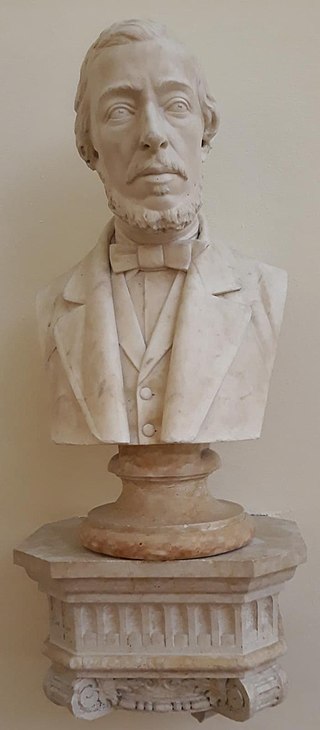
Abramo Bartolommeo Massalongo was an Italian paleobotanist and lichenologist. He was born in Tregnago in the Province of Verona and took a great interest in botany as a young man. Massalongo joined the faculty of medicine at the University of Padua in 1844. Along with Gustav Wilhelm Körber, he founded the "Italian-Silesian" school of lichenology. He also collaborated with Martino Anzi. He was the husband of Maria Colognato and the father of hepaticologist Caro Benigno Massalongo. He also worked in the scientific field of herpetology. Massalongo edited the exsiccata Lichenes Italici Exsiccati (1855-1856). In 1859 his Catalogo dei rettili delle province venete was published in Venice.
Alexandre François Malbranche was a French pharmacist, botanist and mycologist. He is known for his botanical and mycological studies associated with Normandy,
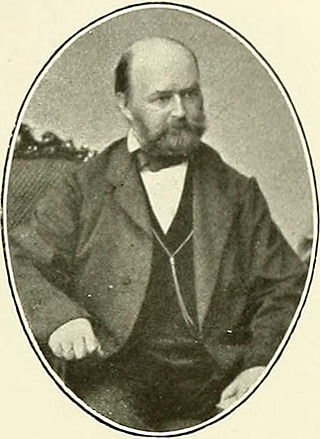
Gustav Wilhelm Körber was a German lichenologist.
George Knox Merrill was an American lichenologist. He was a leading exponent of lichenology in the early 20th century. He was particularly interested in species of the family Cladoniaceae, in which he published several new species, varieties, and forms. In 1909 he started publishing Lichenes Exsiccati, which he continued intermittently until 1927; 400 specimens were presented in two exsiccata series.
Syo Kurokawa was a noted Japanese lichenologist and 1994 recipient of the Acharius Medal. He studied under Mason Hale and Yasuhiko Asahina. Between 1966 and 1987 he edited the exsiccata Lichenes rariores et critici exsiccati, starting with 1978 together with H. Kashiwadani.
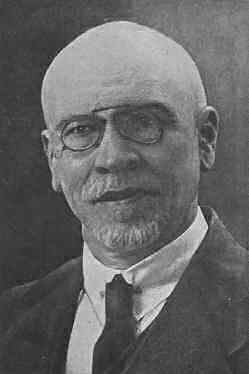
Alexander Alexandrovich Elenkin was a lichenologist in the Russian Empire and the Soviet Union. He was born in Warsaw and took his degree in botany at the University of Warsaw, graduating in 1893. He became an assistant there in 1898. The next year he became conservator and director of the Cryptogamic Department at the Imperial Botanic Garden of Saint Petersburg. Since 1901 Elenkin issued the exsiccata series Lichenes florae Rossiae et regionum confinium orientalium. In 1931 the Botanic Garden was merged into the Botanical Institute and he became a professor there. He is known as the "father of Russian lichenology" and wrote many works on the subject. He died in 1942, in Kazan, where he temporarily lived and worked with all the rest of the staff of the Botanical Institute while being in evacuation status from Leningrad.

Yasuhiko Asahina was a Japanese chemist and lichenologist.

Hugó Lojka was a Hungarian teacher and lichenologist. He was one of the first researchers of Hungarian cryptogams, especially lichens.
Rolf Santesson (1916–2013) was a Swedish lichenologist and university lecturer. He was awarded the Acharius Medal in 1992 for his lifetime contributions to lichenology.
Antonín (Toni) Vězda was a Czech lichenologist. After completing a university education that was postponed by World War II, Vězda taught botany at the Czech University of Life Sciences. In 1958, he was dismissed from his university position as a result of the restrictions placed on academic freedoms by the communist regime in power. He eventually was hired as a lichen researcher by the Czechoslovak Academy of Sciences, who allowed him to work from his apartment, which served also as an office and herbarium.

Cladonia apodocarpa, also known as the stalkless cladoniais or the stalkless cup lichen, is a species of cup lichen in the Cladoniaceae family. Found in North America, it was described as a new species by Charles Albert Robbins in 1925.

Veli Johannes Paavo Bartholomeus Räsänen was a Finnish lichenologist.
Josef Anders was a Czech botanist and lichenologist.
Klára Anna Verseghy was a Hungarian lichenologist. She was the curator of the lichen collection of the Hungarian Natural History Museum in Budapest from 1958 to 1985.












